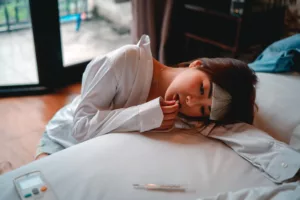Recently the CDC revealed that 2020 was the most deadly year for opioid overdoses ever recorded. Over 93,000 drug overdose deaths occured in the US within that single year. With the opioid epidemic getting exponentially worse, many families fear for the lives and safety of loved ones struggling with opioid dependence. This is partially because the relapse rates for opioid addicts in recovery are one of the bleakest of all drug classes. About 94% of opioid users relapse within a year of treatment, compared to alcohol at 60%. But there is hope: professionals in the field of addiction treatment advocate for more widespread use of medication-assisted treatment. Opioid users specifically show much better recovery rates with suboxone maintenance.
Prescrition Medication for Treating Addiction
The prescription medication brand Suboxone consists of buprenorphine and naloxone. These two drugs are commonly used in treatment separately as well:
- Buprenorphine is a partial opioid antagonist that blocks opioid receptors to reduce opioid cravings. It offers a safe way to address opioid withdrawal symptoms during detox.
- Naloxone blocks opioid receptors (users can’t get high) and reduces cravings for alcohol.
When buprenorphine and naloxone combine, they offer an effective long term solution to prevent opioid relapse. Suboxone’s ingredients both reduce cravings and block any effects of opioids to help users transition from drugs like heroin, oxycodone, and other prescription opioids into sobriety without experiencing dopesickness.
“When taken properly, individuals on Suboxone will have no cravings, have no withdrawal, and will feel ‘normal’…that’s why it’s so effective.” Dr. Adam Bisaga, professor of psychiatry at CUMC and researcher at New York State Psychiatric Institute
Suboxone Maintenance Advantages


 Suboxone has become the preferred method of treatment for opioid addiction. One of the main advantages of suboxone maintenance is that it’s a long term solution. Detox and residential care may be effective at getting opioid users clean, but they do not typically provide the support needed for recovering opioid users to stay clean after discharge. Suboxone belongs to the depressant class of drugs, so it does not speed users up like stimulants do. Those taking the medication may experience pain relief, calmness, reduced stress, and more ability to relax.
Suboxone has become the preferred method of treatment for opioid addiction. One of the main advantages of suboxone maintenance is that it’s a long term solution. Detox and residential care may be effective at getting opioid users clean, but they do not typically provide the support needed for recovering opioid users to stay clean after discharge. Suboxone belongs to the depressant class of drugs, so it does not speed users up like stimulants do. Those taking the medication may experience pain relief, calmness, reduced stress, and more ability to relax.
Recovery Program Integration
Though suboxone offers significant advantages to avoid relapse, it is important to include it as a part of a more comprehensive recovery program. Relying on suboxone alone can’t treat addiction, and maladaptive coping methods may resume without the proper therapeutic support.
Addiction professionals recommend intensive outpatient (IOP) as a supplement to suboxone maintenance. Other options include support groups like AA or NA and individual therapy.
If you or someone you love is suffering from a substance abuse disorder, our behavioral health counselors are available 24/7 by phone: 714-203-2708




